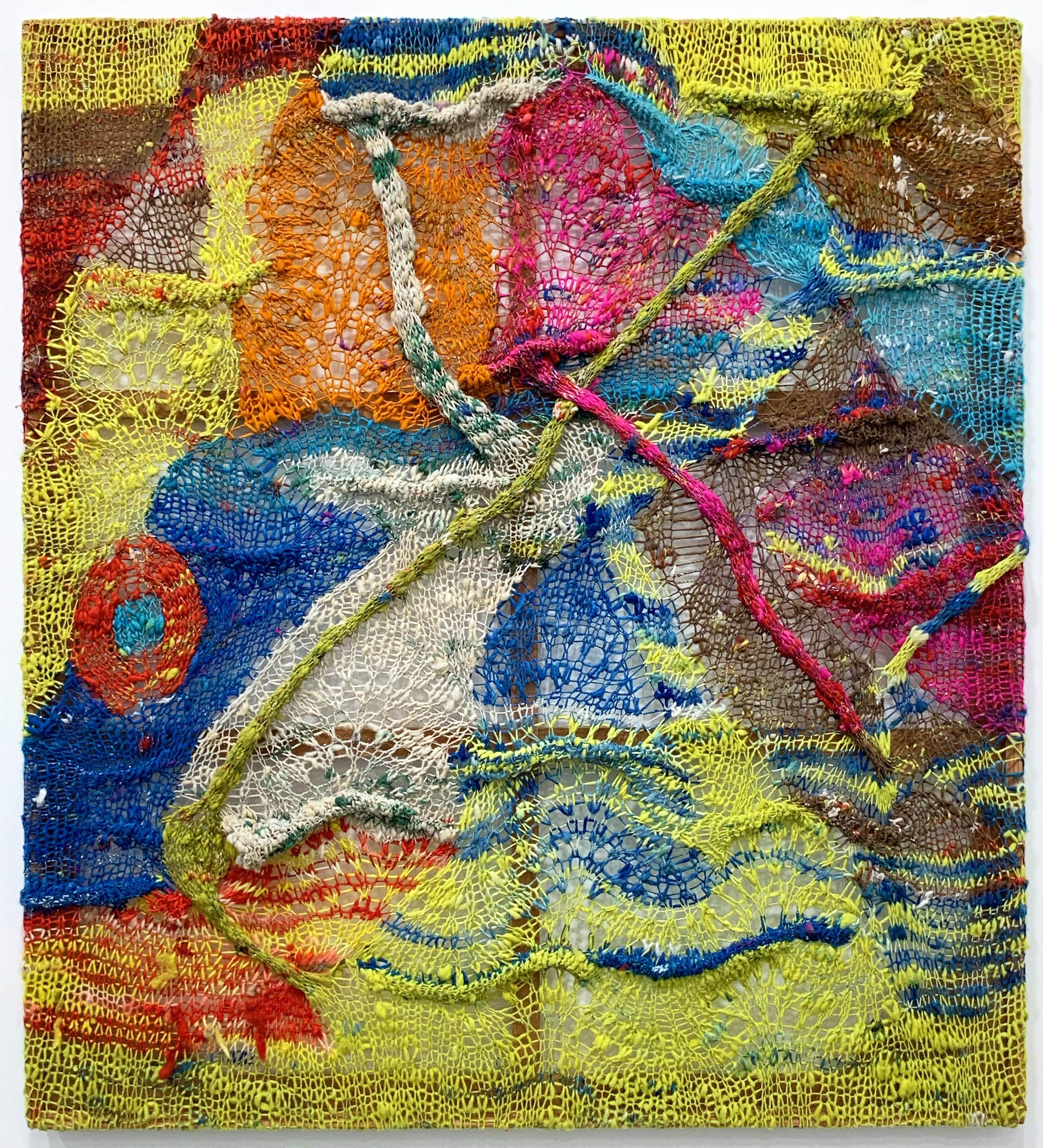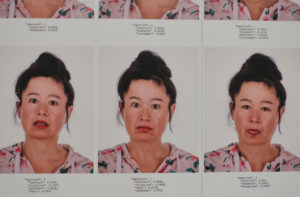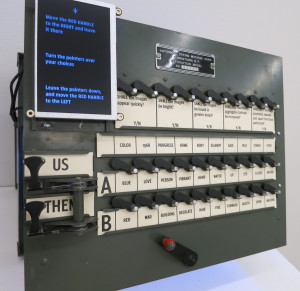At what point in human development did we become self-aware? This question absorbs Kristen Sanders in new paintings featuring mask-like faces in pre-historic natural environments at Asya Geisberg Gallery in Chelsea. Interested both in the initial development of human consciousness and its current potential for manifestation via AI, Sanders visages look as if they’ve been peeled from contemporary mannequins and abandoned in ancient shell-strewn, rocky coastal scenes. In this haunting image of a floating head titled ‘Middle Paleo,’ long lines across the face could reference the first deliberate marks made in sand by protohumans (a Sanders preoccupation), drips of a strange liquid or slash marks. The ambiguity is provocative, highlighting the figure’s artificiality and strangeness and acknowledging the difficulty of reconciling such vastly distant eras of human development. (On view in Chelsea through July 8th).




